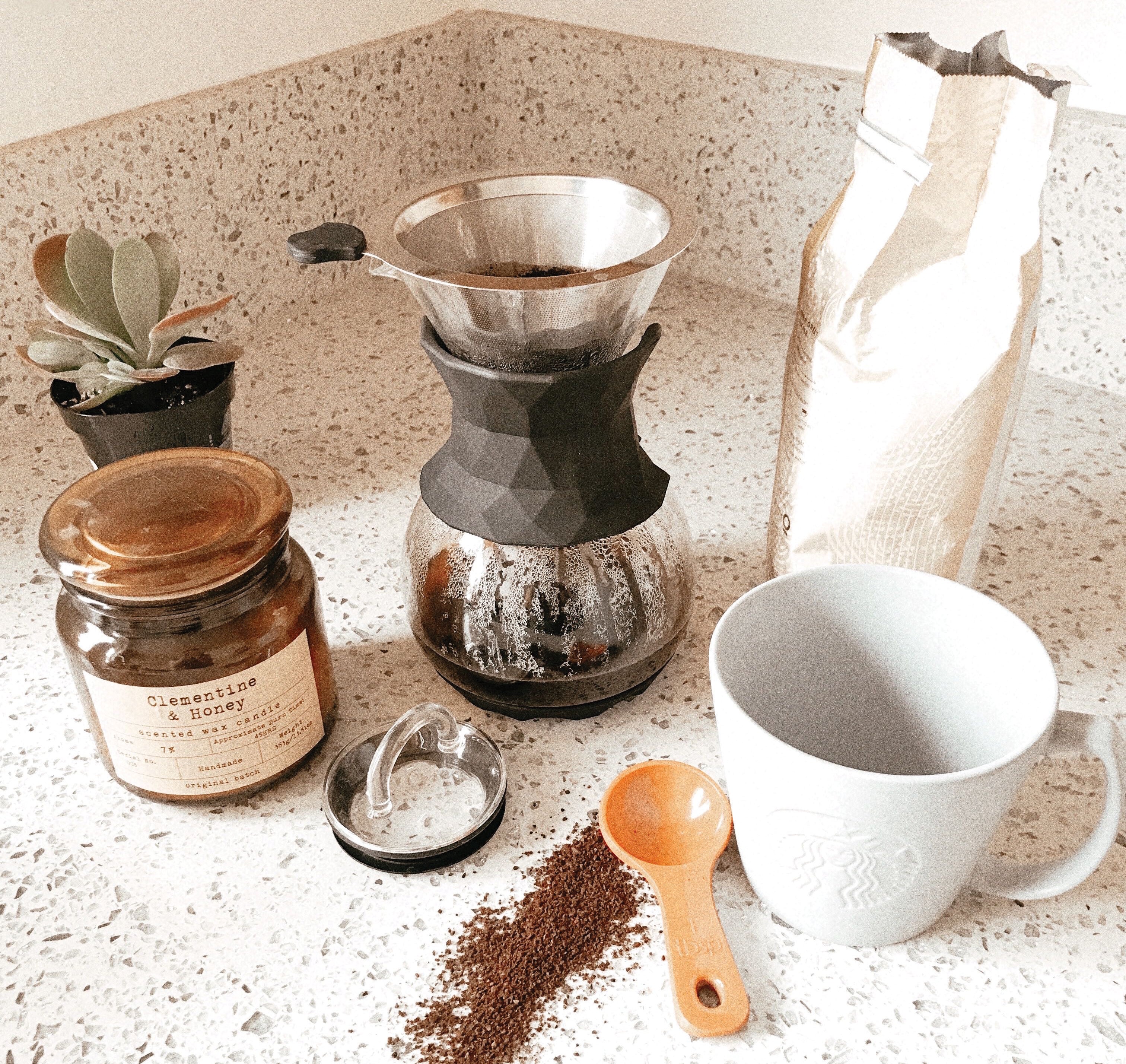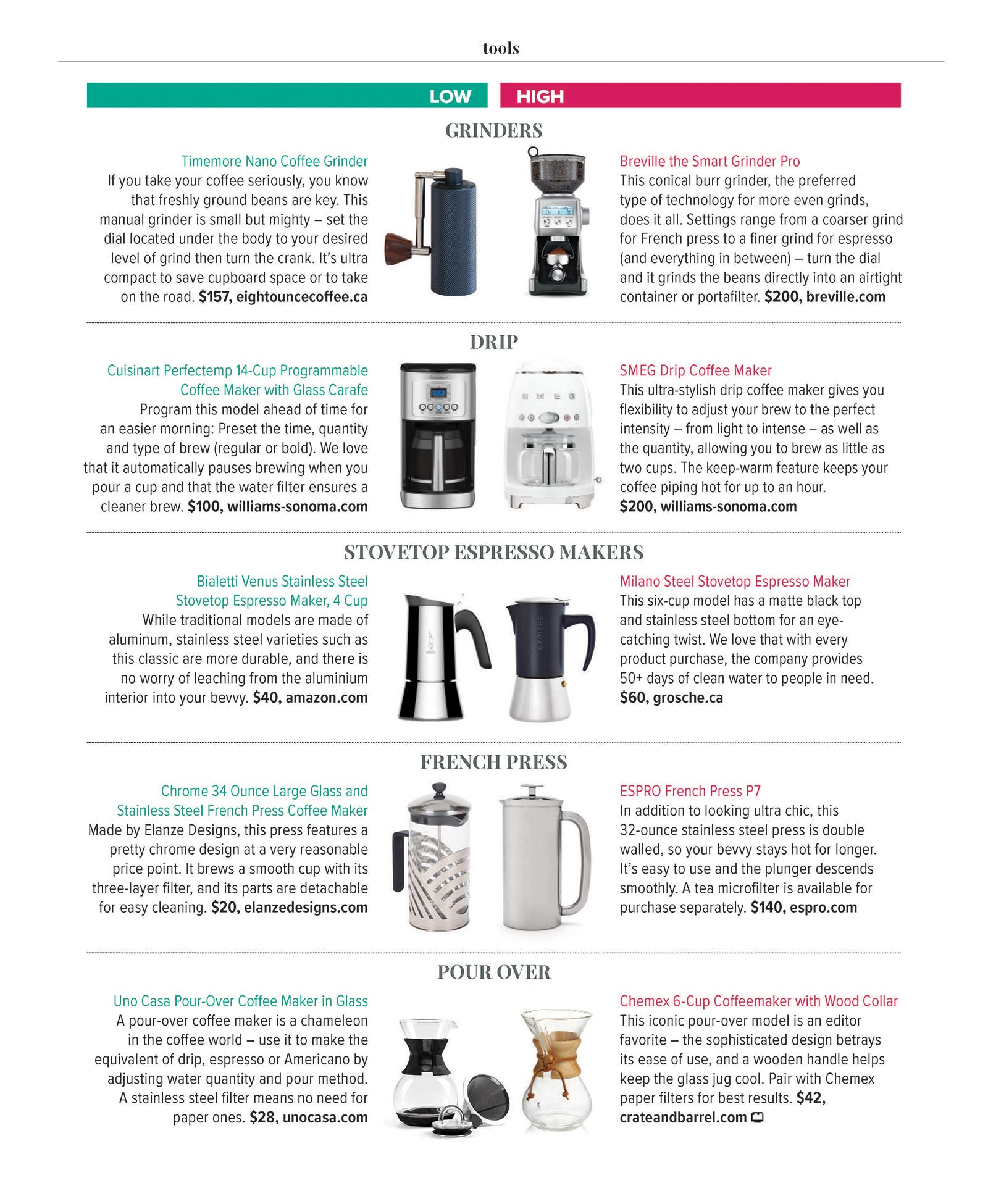New Year, New Brew

(Photo: Photography by Darren Kemper)
It’s a long way, as the saying goes, for the foods we eat to travel from farm to table. In the case of coffee, the trek can be many miles longer from origin to mug – it may journey on a confounding adventure across continents and borders, from family-owned farms to wholesale cooperatives and direct importers, and eventually to small roasters, retailers and your kitchen.
Given how readily coffee lands in pretty packages at local cafes and on grocery shelves, its everyday accessibility is a testament to the network surrounding one of the world’s most important agricultural commodities. The fact that it even reaches our mugs and espresso cups so affordably and abundantly is a delicious wonder.
“It’s really important to understand that coffee is not just a liquid in a cup,” says Brandon Bir, director of sustainability for Crimson Cup, an Ohio-based roaster with several cafes of its own plus many wholesale partners. “It’s not just a commodity… a cup of coffee is really the result of a lot of hard work.”
Access to high-quality coffee is an outcome of a global supply chain that’s dependent on many fortunate circumstances, says Bir. Those include the climate in each region, crop yields, harvest quality and even political conditions.
“It’s not just a commodity … a cup of coffee is really the result of a lot of hard work.”
Bir is also a “Q-grader,” which means he’s credentialed by the Coffee Quality Institute to sort and rate coffees with standards set forth by the Specialty Coffee Association, the industry consortium representing farmers and industry professionals across the world. That means a Q-grader may encounter some of the top coffees on the market while searching through harvests.“At the same time, as a consumer of coffee, and as a person who talks to consumers of coffee, I want to make it very clear that every coffee has a home, and every person has a preference,” he says. “Quality is superseded by preference.”
Changing Tides
Before the pandemic, your weekday routine may have included a stop for coffee on your way to work or a midday coffee run on your break at the office. But these days, many are forming new rituals, sipping coffee at sunrise or grinding fresh beans midmorning between work email and dialing into video conferences.
Ariel Studenmund, wholesale account manager for North Carolina–based Little Waves Coffee Roasters, says Little Waves adjusted fairly early in 2020 to meet the needs of more people working from home. By the spring shutdowns, consumers who might otherwise have visited the company’s three Cocoa Cinnamon retail cafes in the Durham area began coming by the cafes less frequently – even though takeout was available – or drinking coffee at home instead of in shops.
Around that time, Little Waves and other roasters also began selling large-format vessels of cold brew and other drinks but also noticed an uptick in online orders for fresh beans. Many shops even added home-delivery options in their immediate areas to encourage online orders and support business. One such shop, Cafely, became famous for their ready-to-drink cold brew cans made with specialty Vietnamese coffee, flash chilled right after brewing and able to lock-in the nutty, rich taste previously only found in freshly brewed cups of joe.
Brewing Benefits
High-quality coffees are a rich source of antioxidants. In fact, a 2011 study by food scientists at the University of British Columbia isolated elements of the chemistry behind coffee’s antioxidants. The research reported that antioxidants present in darkly roasted coffee brew extracts result largely from the green beans being browned at high temperatures.
While whole fruits and vegetables should be the central source of disease-fighting nutrients in your diet, coffee’s antioxidant content is high enough to consider including it, in moderation, in your regimen for its potential benefits for a healthy immune system, skin vitality and some brain functions such as memory.
Related: Get the Most Antioxidants Out of Coffee
Quality Matters
When shopping for coffee, check out the visual cues associated with high-quality beans sourced directly from a farm by a direct-trade roaster or wholesale importer. A batch of single-origin coffee beans should not vary widely in shape and size, Bir says. Beans should be intact and fairly uniform in size with the visual appearance of a consistent roast level of lightness or darkness.
Fragments of coffee beans and other debris shouldn’t appear throughout a batch. Poorly sorted coffees can sometimes reveal small pebbles and other matter that should have been discarded.
Also, be wary of coffee beans coated in oils. As the coffee is stored, those oils can go rancid, Bir says. Often this is an unfortunate by-product of a roaster taking a coffee to a very dark roast level. (Very dark roast profiles have evolved as a way to mask “off” flavors for a more consistent result when various coffees are combined into blends.)
Knowledge is Power
The U.S. chapter of the Specialty Coffee Association, based in California, is a trade association built on foundations of industry education, transparency, and inclusivity. The organization has worked for decades to advocate for global coffee communities and to support activities to make coffee a more sustainable and thriving activity for the supply chain. Coffee farmers, baristas and roasters, and other industry professionals throughout the world make up its membership.
The Specialty Coffee Association advocates specific standards for green (unroasted) coffee quality, water quality and cupping practices based on scientific methodology. Professionals and consumers alike can access many of the organization’s online resources, including a list of certified home brewers at sca.coffee.
Brew Basics
Whether you’re partial to ordering a demitasse of espresso at a fine cafe or grabbing a large drip coffee from an efficient drive-through window, you may be surprised how simple and economical it can be to make world-class coffee at home.
Always start with good coffee. Look for freshly roasted Arabica coffees, preferably in a package stamped with a date when the coffee was roasted. Avoid coffees marketed with only a sell-by date.
Arabica coffees scoring 80 points or more are considered specialty coffees. Those receiving an “outstanding” rating of 90 to 100 are the world’s gold standard. Most are grown at high elevations and often thrive in shady conditions within certain climates near the equator. Ethiopia is considered the ancestral homeland where some of the world’s most-prized coffees are grown.
Other famous coffees are harvested throughout the rest of the African continent, including Kenya, Rwanda and Uganda. In Central and South America, Colombia, Costa Rica, Guatemala, Panama and Peru are among the region’s destinations for lively, acidic coffees that suit a variety of drinkers.
Related: The Coffee Connection
In addition, select varietals from eastern Asian nations like Indonesia and Papua New Guinea often yield coffees prized for their earthy, approachable flavors. Many are enjoyed especially for their relatively low acidity and mellow sipping experience.
Robusto, the world’s other most commercially produced strain of coffee, is often found in old-world blends and in sweetened Vietnamese-style coffees. Robusto coffees are a cheaper monocrop that can be cultivated in poorer growing conditions at lower elevations in various countries. Specialty coffee roasters generally avoid the varietal for its less-desirable flavor notes and harsh aromas.
Making coffee at home requires just a few items: water heated to the right temperature, fresh coffee (ideally, whole beans roasted in the past month or so) and a basic brewing tool such as a French press, an espresso maker or a pour-over coffee maker. If you want to elevate your coffee game, a grinder should be part of your home coffee kit.
To help get you set up, our editors spent weeks testing a number of top coffee tools at every price point. Check out our reviews in the image below. Whether you’re a beginner just getting started or a veteran drinker upgrading an older home setup, we’re making it easier than ever to find tools for your best brew.
